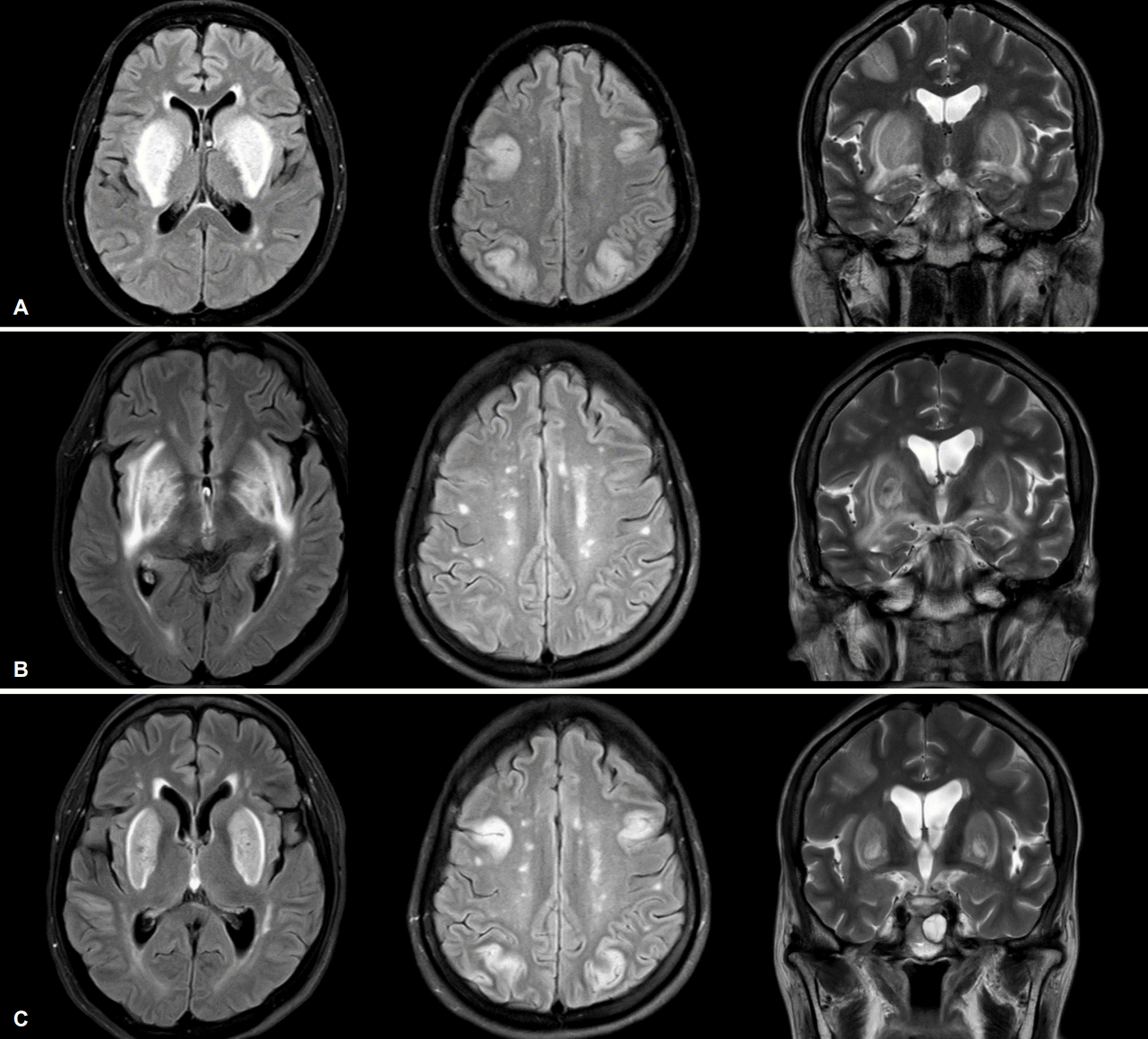요독증에 동반된 가역적후뇌병증
Posterior Reversible Encephalopathy Syndrome Combined with Uremia Encephalopathy
Article information
당뇨병, 고혈압, 만성콩팥병을 앓고 있는 51세 여자가 의식변화로 내원하였다. 당시 혈압은 220/100 mmHg로 높았으며 혈중요소질소 78.9 mg/dL, 크레아티닌 9.1 mg/dL로 요독증 소견이 관찰되었다. 뇌 자기공명영상의 액체감쇠역전회복영상과 T2 강조영상에서 양측 기저핵에 고신호강도가 보였으며, 양측 전두엽과 두정엽에 대칭적으로 고신호강도 병변이 관찰되었다(Fig.). 투석과 혈압조절 후 의식은 호전되었고, 한 달 후 시행한 추적영상에서는 전두엽과 두정엽의 병변은 소실되었고 기저핵 주변의 부종도 호전양상을 보였다. 한달 후 다시 의식변화로 내원하였고 전두엽과 두정엽 병변이 악화되었다. 기저핵에 전형적인 변화가 동반된 요독성 뇌병증과 가역적후뇌병증이[1] 호전과 악화를 반복한 드문 증례로 이를 보고하는 바이다.

Fluid attenuated invention recovery images (FLAIR) and T2 weighted images of brain magnetic resonance image (MRI) show bilateral high signal intensity at both lentiform nuclei, frontal lobe and parietal lobe (A). One month follow up MRI reveal decreased edema on both lentiform nuclei and loss of high signal intensities on both frontal and parietal lobe (B). On readmission, follow up MRI shows newly develop high signal intensity lesions in cortical regions of both frontal and parietal lobe cortices (C).